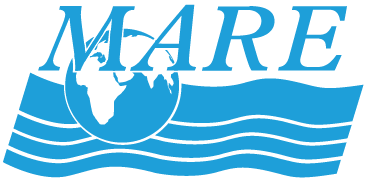Development Process and MARE’s Role
MARE has contributed significantly to the community effort to develop the Ocean Literacy Framework. MARE staff led some of the early movements with the National COSEE Network and National Marine Educators Association that ignited the national campaign for Ocean Literacy. MARE took on a more prominent role in the Campaign as its staff coordinated the community effort to create the Ocean Literacy Scope and Sequence.
Development of the Ocean Literacy Scope and Sequence for Grades K–12 involved an extensive iterative process that took the ocean sciences education community four years to develop.
First drafts of the conceptual flow diagrams for the Scope and Sequence were created between 2006–2008 at working meetings around the country, including at:
- The Lawrence Hall of Science/MARE—April 2006 hosted by COSEE California and NOAA Office of Education;
- Annual meetings for the National Science Teachers Association; and
- Annual meetings for the National Marine Educators Association.
These meetings were led by members of the community: Rita Bell, Tina Bishop, Francesca Cava, Beth Jewell, Judy Lemus, Sarah Schoedinger, Craig Strang, Peter Tuddenham, and Lynn Whitley.
Second drafts of the conceptual flow diagrams were created and reviewed in 2008. The Hall/MARE/COSEE California led small group working meetings to develop the Scope and Sequence from these first drafts through an intensive process of writing, reviewing, and revising the content, language, organization, and presentation of each conceptual flow diagram. The ocean sciences education community scrutinized the second draft in an online public review in November 2008.
- Coordinated by Lynn Tran, the Hall/MARE team included Noelle Apostol, Emily Griffen, Catherine Halversen, Sarah Pedemonte, Craig Strang, Emily Weiss, and Maia Wilcox.
- Additional assistance from ocean scientists and educators from the community included: Frannie Coopersmith, John Farrington, Myrna Jacobson, David Mountain, Adina Paytan, Gil Rosenthal, Bob Stewart, and Tammie Visintainer.
- Together these individuals represented a diverse range of educational and scientific expertise:
- physical, biological, and geochemical oceanographers
- marine educators
- curriculum development specialists
- educational researchers
Third drafts of the conceptual flow diagrams were created and reviewed in 2008–2009. For review of the third draft, The Hall/MARE/COSEE California staff coordinated experts in science and education to scrutinize the entire Scope and Sequence.
- Teams of ocean scientists with expert knowledge in the particular concepts within a particular principle were selected to review all four grade band conceptual flow diagrams for that principle. They reviewed the flows for scientific accuracy and conceptual logic.
- Fourteen educators with expertise in conceptual flow diagrams, the Ocean Literacy Principles, classroom teaching, curriculum development, and educational research examined the flows for accuracy as conceptual flow diagrams and their developmental appropriateness and progression.
The final version of the Scope and Sequence was published in the March 2010 issue of Current: The Journal of Marine Education as the featured component of the NMEA Special Report #3 on the Ocean Literacy Campaign.
Craig Strang, MARE’s director, and Peter Tuddenham gave a joint presentation on Ocean Literacy efforts in the USA at the first conference on Ocean Literacy in Europe, held in Belgium on October 12, 2012.

